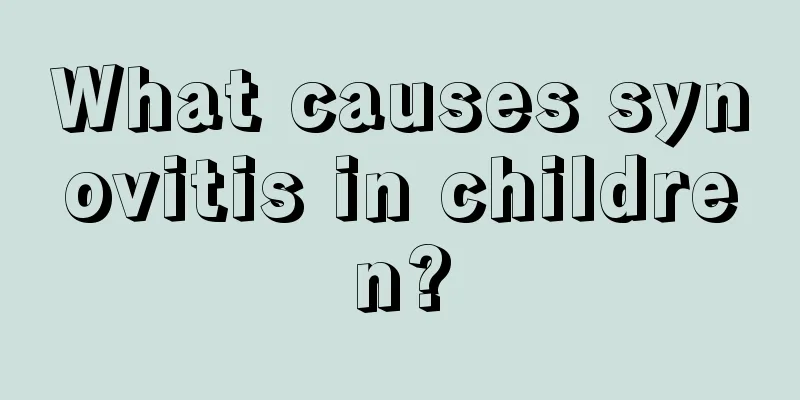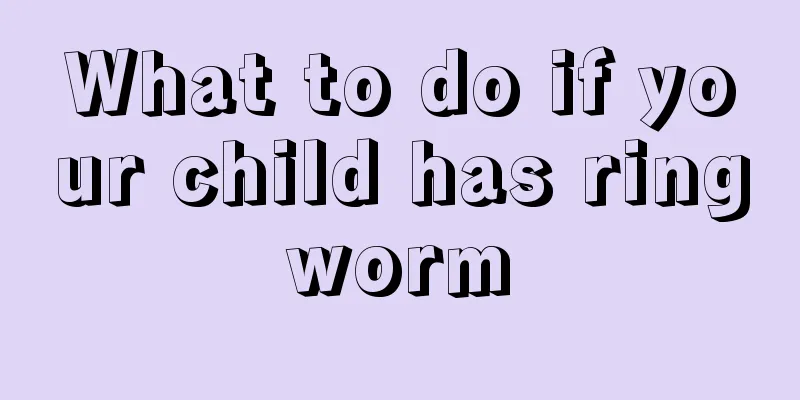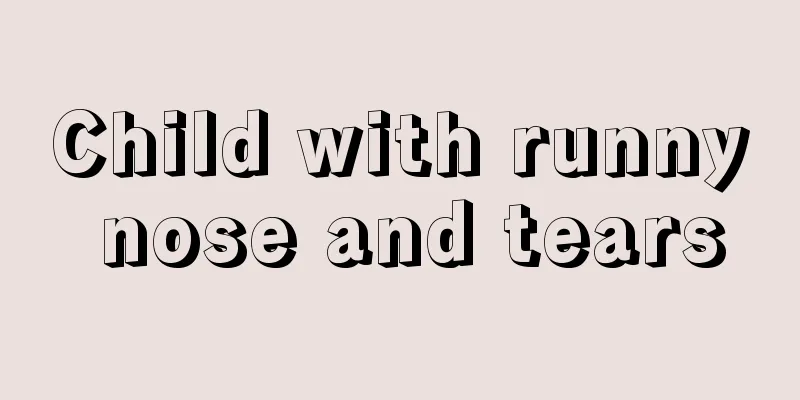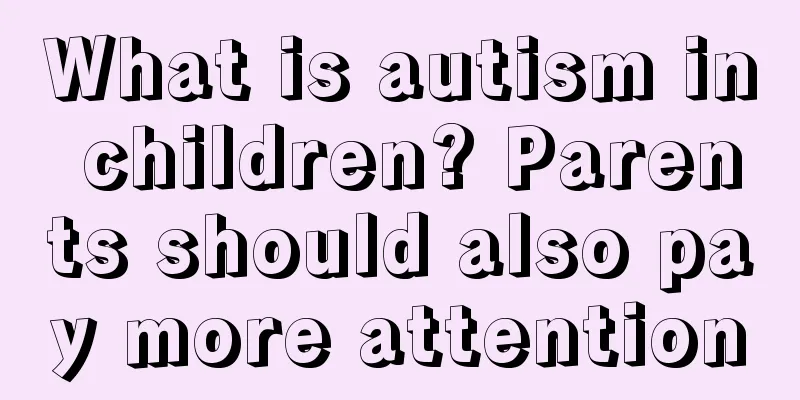The early symptoms of polio are like this
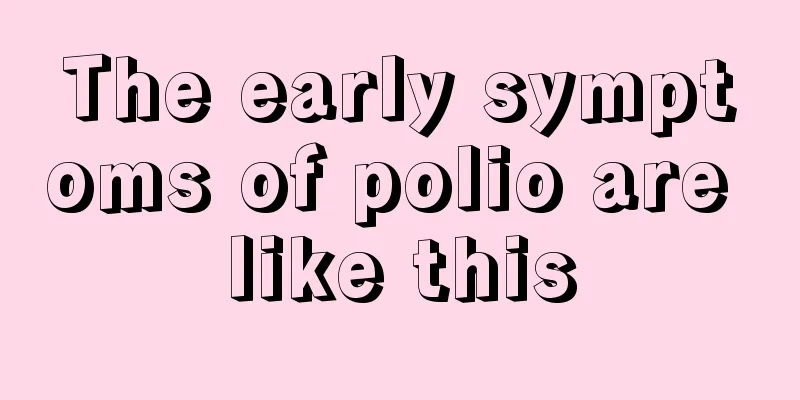
|
What are the early symptoms of polio? Most parents are not very clear about this issue. In fact, the symptoms of polio are divided into five stages, and the clinical manifestations of each stage are different. The early symptoms of polio, also known as the prodromal stage, are mainly fever, loss of appetite, etc. Clinical manifestations of poliomyelitis: After human infection, the incubation period is 5 to 14 days. The vast majority (95%) show asymptomatic infection, some show abortive or non-paralysis type, and only a few develop paralysis. 1. Prodromal stage The main symptoms are fever, loss of appetite, sweating, irritability and systemic hyperesthesia; nausea, vomiting, headache, sore throat, constipation, diffuse abdominal pain, rhinitis, cough, pharyngeal exudate, diarrhea, etc. may also occur, lasting 1 to 4 days. If the disease does not progress, it is called the abortive type. 2. Early stage of paralysis 1 to 6 days after the prodromal fever subsides, the body temperature rises again, forming a bimodal fever pattern. Headache, nausea and vomiting worsen, muscle pain all over the body, especially pain in the neck, back and limbs, hypersensitivity, and unwillingness to be hugged by others. When forced to sit up, the patient supports himself with both hands backwards, showing the "tripod sign". There are usually changes in the cerebrospinal fluid at this stage. If the course of the disease ends at this stage, it is a non-paralysis type. 3. Paralysis Paralysis begins 3 to 4 days before paralysis, usually when the body temperature begins to drop, and gradually worsens. After the body temperature returns to normal, the paralysis stops developing and there is no sensory impairment. Can be divided into the following types: (1) Spinal cord type: Flaccid paralysis occurs in the limbs with asymmetrical distribution. The lower limbs and large muscle groups are more susceptible to involvement than the upper limbs and small muscle groups. Tendon reflexes disappear, but sensation exists. It may also affect the neck and back muscles, diaphragm, and intercostal muscles, resulting in difficulty in erecting the head, respiratory movement disorders, and contradictory breathing; if it affects the abdominal muscles and bladder muscles, urinary retention, constipation, and incontinence may occur. (2) Medullary type: also known as brainstem type or bulbar type. The lesions involve the motor nuclei of the cranial nerves and the respiratory and circulatory centers of the medulla oblongata. It accounts for 5% to 10% of the paralysis type. When the respiratory center is affected, irregular breathing, irregular rhythm and abnormal breathing may occur; when the vasomotor center is affected, changes in blood pressure and pulse rate may occur. When cranial nerves are damaged, corresponding symptoms and signs of nerve paralysis appear. (3) Cerebral type: less common, characterized by high fever, agitation, convulsions or drowsiness, coma and spastic paralysis of limbs. (4) Mixed type: Several types mentioned above exist at the same time, with the spinal cord type and medullary type coexisting more commonly, often with limb paralysis and respiratory impairment. 4. Recovery period 1 to 2 weeks after paralysis, the diseased muscles begin to recover, starting from the distal end of the limbs. Generally, the disease can be fully recovered in 8 months, while severe cases may take 6 to 8 months or even longer. 5. Sequelae In severe cases, the affected muscles atrophy and the nerve function cannot be restored, causing deformities of the affected limbs. Partial paralysis cases develop progressive neuromuscular weakness and pain decades after infection, with worsening paralysis of the affected limbs, a condition known as "post-polio muscular atrophy syndrome." The cause is unknown. Comorbidities: Peripheral or central respiratory paralysis may lead to aspiration pneumonia, atelectasis, purulent bronchitis and respiratory failure causing severe bleeding; long-term bed rest may cause bedsores and negative balance of nitrogen and calcium, manifested as osteoporosis, urinary stones and renal failure. |
<<: Prevention of mycoplasma infection in children is like this
>>: What should I do if my child has a toothache and swelling? It turns out that this can be solved
Recommend
How to treat sneezing and fever in children
How to treat children's sneezing and fever? M...
What to do if you are allergic to milk
Many babies are allergic to milk due to physical ...
Neonatal hypothyroidism
Various physical conditions that occur during pre...
How tall is a one year and five month old baby
During the baby's growth and development proc...
Why does the baby have a lot of eye mucus in one eye?
Newborn babies are very susceptible to minor illn...
What to do if your child has indigestion and constipation
When the baby is young, due to the lack of probio...
What to do if your child is afraid of ghosts
It is a common phenomenon that children are timid...
What to do if your baby has unformed stools and difficulty in defecation
We all know that the baby's health and food a...
What is the reason for the child's diarrhea to be green?
What’s wrong with my child’s green diarrhea? Chil...
What should I do if my child doesn't want to eat?
We as parents will encounter the situation where ...
Can cord blood storage really leave hope for the child's life?
Due to the popularity of "Young Doctors"...
Why does my baby's tongue itch?
The tongue is an organ located at the bottom of t...
Should we give up on fetal lymphangioma?
Before the fetus is born, some problems with the ...
What should I do if my child is slow in doing homework?
Many children will dawdle when doing their homewo...
10-year-old child often has headaches?
Occasional headaches are very common in life, but...
